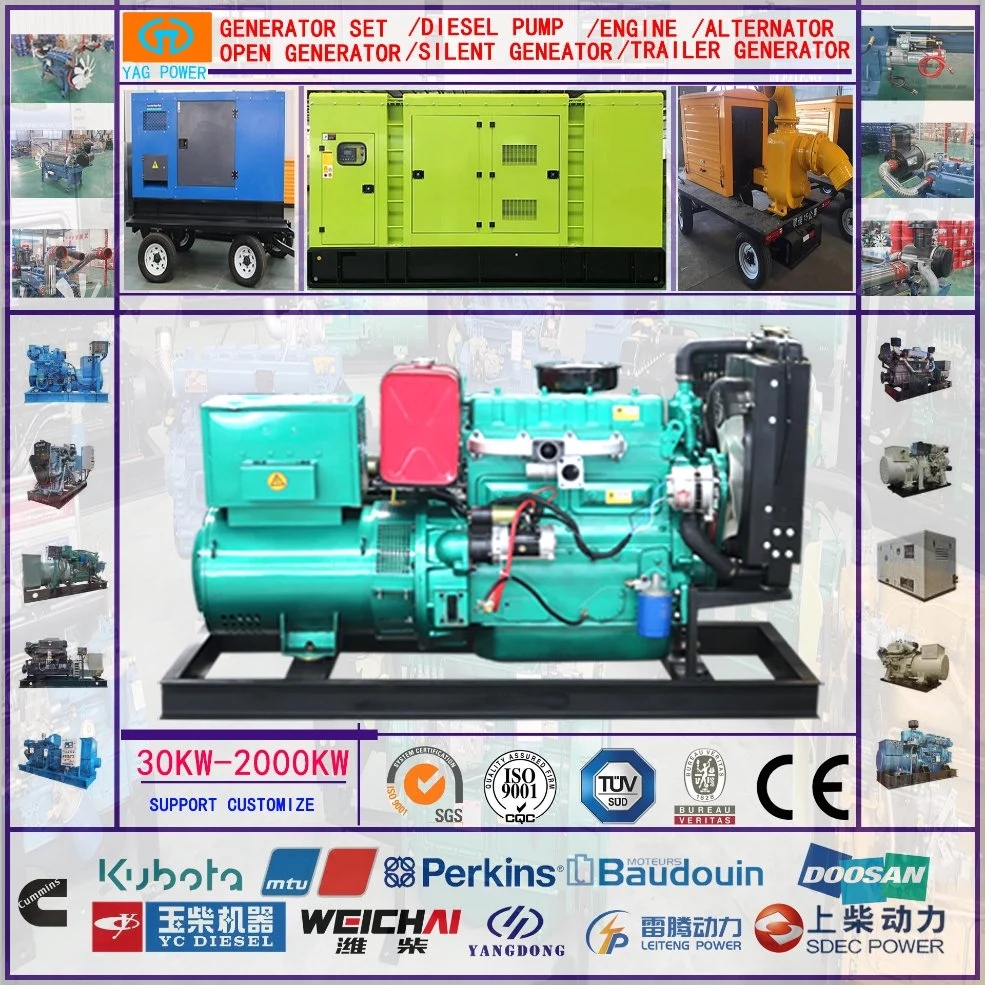Optimizing Diesel Generators for High-Altitude Operations
Introduction Diesel generators are an essential source of power in various industries, providing a reliable and efficient solution for electricity generation. However, operating diesel generators at high altitudes presents unique challenges that must be addressed to ensure optimal performance. In this article, we will explore the considerations and best practices for optimizing diesel generators for high-altitude operations. Understanding High-Altitude Operation High-altitude locations are typically defined as areas above 5,000 feet (1,500 meters) above sea level. At higher altitudes, the air becomes thinner, leading to reduced oxygen levels and atmospheric pressure. These changes in environmental conditions can impact the performance and efficiency of diesel generators, requiring specialized adaptations to maintain reliable operation. Challenges of High-Altitude Operation 1. Reduced Engine Performance: The decrease in oxygen levels at high altitudes can affect the combustion process in diesel engines, leading to reduced power output and efficiency. This can result in lower generator capacity and increased fuel consumption. 2. Cooling System Efficiency: Diesel generators rely on effective cooling systems to maintain optimal operating temperatures. At high altitudes, the thinner air can impair the cooling system's ability to dissipate heat, potentially leading to overheating and engine damage. 3. Fuel Combustion Issues: The lower oxygen levels at high altitudes can also impact fuel combustion in diesel engines, affecting the ignition and combustion process. This can result in incomplete combustion, increased emissions, and reduced engine performance. 4. Altitude-Induced Wear and Tear: High-altitude operation can subject diesel generators to increased wear and tear due to the harsh environmental conditions. Factors such as temperature fluctuations, altitude-induced vibrations, and exposure to contaminants can accelerate component degradation and reduce the generator's lifespan. Optimizing Diesel Generators for High-Altitude Operations To overcome the challenges associated with high-altitude operation, it is essential to implement specific strategies and modifications to optimize diesel generators for these environments. The following are key considerations for enhancing the performance and reliability of diesel generators at high altitudes: 1. Engine Calibration and Tuning: Diesel engines used in high-altitude applications should be calibrated and tuned to compensate for the reduced oxygen levels. This may involve adjusting the fuel-to-air ratio, injection timing, and turbocharger settings to optimize combustion and maintain power output. 2. Turbocharging and Intercooling: Turbocharging is a common technique used to boost engine performance at high altitudes by increasing the air intake pressure. Intercooling can further enhance the efficiency of turbocharged engines by reducing the temperature of the compressed air before it enters the combustion chamber. 3. 30kw diesel generator for remote relief projects -Altitude Fuel Formulation: The composition of diesel fuel can impact combustion performance at high altitudes. Using fuel formulations with higher cetane ratings and improved ignition characteristics can enhance engine efficiency and reduce emissions in low-oxygen environments. 4. Enhanced Cooling Systems: Upgrading the cooling system of diesel generators for high-altitude operation is crucial to prevent overheating and maintain optimal operating temperatures. This may involve installing larger radiators, improving airflow, or integrating additional cooling components to enhance heat dissipation. 5. Altitude-Adapted Components: Selecting components and materials that are designed to withstand the unique challenges of high-altitude operation is essential for ensuring the longevity and reliability of diesel generators. This may include altitude-rated sensors, seals, gaskets, and insulation materials that can withstand altitude-induced stresses. 6. Regular Maintenance and Monitoring: High-altitude operation can accelerate wear and tear on diesel generators, necessitating regular maintenance and monitoring to ensure optimal performance. Implementing a proactive maintenance schedule, conducting routine inspections, and monitoring key performance metrics can help identify and address issues before they escalate.  7. Environmental Considerations: High-altitude environments are often characterized by extreme temperatures, humidity variations, and exposure to contaminants such as dust and debris. Implementing environmental controls, proper ventilation, and filtration systems can help protect diesel generators from environmental factors that can impact their performance and longevity. Conclusion Optimizing diesel generators for high-altitude operations requires a comprehensive approach that addresses the unique challenges posed by low-oxygen environments. By implementing strategies such as engine tuning, turbocharging, altitude-adapted components, and regular maintenance, operators can enhance the performance, efficiency, and reliability of diesel generators at high altitudes. With proper planning and attention to detail, diesel generators can continue to serve as a dependable source of power in challenging high-altitude environments.
7. Environmental Considerations: High-altitude environments are often characterized by extreme temperatures, humidity variations, and exposure to contaminants such as dust and debris. Implementing environmental controls, proper ventilation, and filtration systems can help protect diesel generators from environmental factors that can impact their performance and longevity. Conclusion Optimizing diesel generators for high-altitude operations requires a comprehensive approach that addresses the unique challenges posed by low-oxygen environments. By implementing strategies such as engine tuning, turbocharging, altitude-adapted components, and regular maintenance, operators can enhance the performance, efficiency, and reliability of diesel generators at high altitudes. With proper planning and attention to detail, diesel generators can continue to serve as a dependable source of power in challenging high-altitude environments.